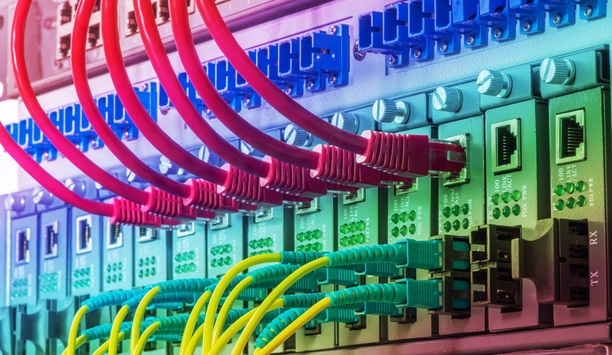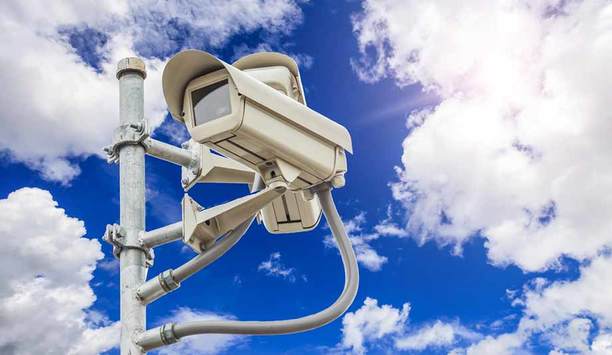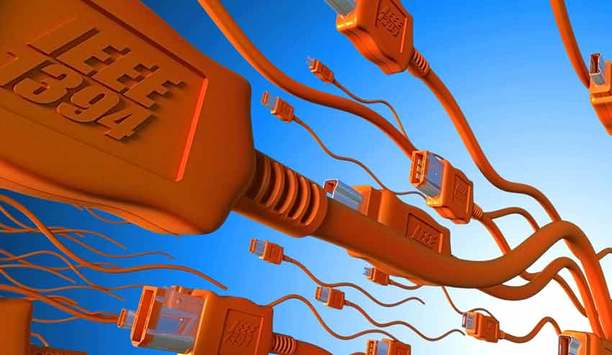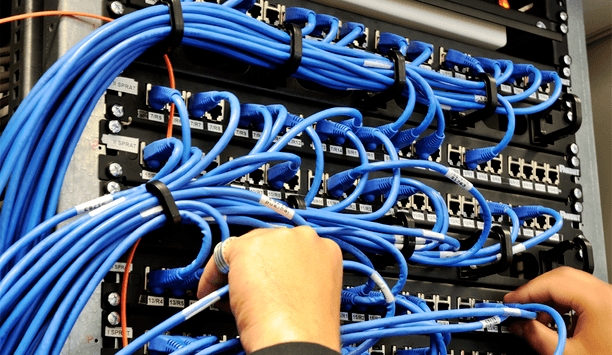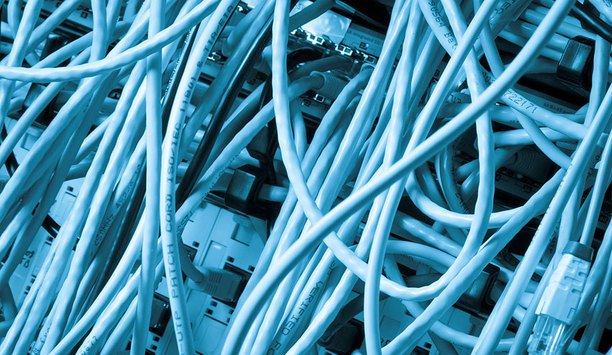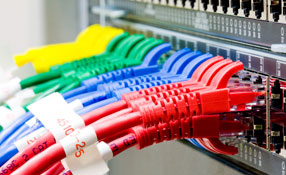Articles by Neil Heller
If one component within the infrastructure changes, other components may need to be changed too Developing a bill of materials for an infrastructure is not difficult if you have the right information. One word of caution: Infrastructures are unique. Each is individual, so don’t depend on drop-down menus; it simply will not work. If one component within the infrastructure changes, take the time to check and see if the rest of the components need to be changed, too. Let&...
IP/PoE systems eliminate the need for local power, thus saving installation costs Cost considerations are an important reason to use existing installed cable as part of a new system infrastructure. Extenders in the form of media converters can help. For almost three decades, video surveillance systems existed in the form of analog systems. Video coaxial cable was the primary method of transmission with a limited distance of about 750 feet. Analog systems required separate pow...
When a manufacturer states a specific PoE power for a camera, always count on the maximum class power source Power over Ethernet (PoE) is an important consideration in IP video security infrastructures, and many people believe Institute of Electrical and Electronics Engineers (IEEE) standards are the last word. However, when it comes to PoE, there is a wide range of both voltages and wattages that can qualify as being within an individual IEEE power class. This applies to both...
The use of multiple wires has advantages for network transmission Network connection to a remote device begins by considering the type of cable. In some cases, installed cable may already be present and available for reuse, or you may have the option to install a new cable. Let’s review the major types of cable used for most security applications, their advantages and disadvantages. Types Of Cables In general, there are four major types of cable. First is coaxial cab...
Too often we attribute failure of connected devices to the devices themselves when the problem is actually an infrastructure failure Network infrastructures for security devices are complex. It may seem simple to connect an Ethernet cable to a cable modem, but the connection of IP cameras, access control devices and other IP/Power Over Ethernet (PoE) devices is not nearly so simple. Infrastructure is the heart of any system; and too often we attribute failure of connected devi...
Any wireless device can be a soft target for hackers Security network hacking is one of the hottest topics today. The ability to access security systems or devices anywhere, leaves them vulnerable and prone to hacking. Any wireless device can be a soft target for hackers. Let’s start with the concept that nothing on a network is really secure. Let’s admit this to ourselves and take the next steps to make our security networks more secure. Internet of Things Securi...
Just as with network switches, there are no real standards for midspans In general terms, a midspan is a power over Ethernet (PoE) power source that is placed between a network switch and the device being powered, hence the term midspan. The real question is, with almost all network switches providing PoE power, why do we need a midspan? The answer is, in some cases we don’t, but in others we do. As with any other product we have discussed, we need to first consider that...
Layering as applied to computers is a made up term having no relationship to any particular standards When it comes to setting the criteria for network switching, we often hear “I only want a layer 3 switch.” We naturally assume that since the number 3 is bigger than the number 2, a layer 3 switch must be better than a layer 2 switch. It may surprise you, but when it comes to video security applications, this may not be the case. In fact, just the opposite may...
Too often a valid assumption turns out to be the opposite in practical operation It’s easy to misinterpret product specifications of IP video transmission products to the detriment of system functionality. We have seen how this problem relates to port speed, power over Ethernet (PoE) and transmission media. Now let’s look at some additional aspects of product specifications – and how they can be misinterpreted. Importance Of Temperature Rating What about te...
4K places extra demands on video security but the results can be rewarding Since last year there has been a lot of talk with regard IP security cameras with 4K resolution. As with any advancement in video security, this too has come about due to advances in consumer electronics. While being the “latest and greatest,” it still raises questions as to actual, practical everyday usage. What Is 4K Resolution? Let’s start by defining 4K. Back in the day we had HD...
Misreading specifications of transmission products can lead to making the wrong selection Manufacturers’ product specifications are the main source of determining product purchases for video security users. In many cases, the ability to pretest a product under the actual operating conditions is almost impossible. Often the choice is between several different product manufacturers. The time and expense it would take to install and evaluate each one in the actual applicati...
Differences between standard data applications and the requirements of networks designed for IP video security applications are critical for your system's performance When the need to purchase a network switch arises, many IT directors immediately turn to two favorites, HP or Cisco. They have become to the networking environment what IBM was to computers: “No one ever got fired for buying IBM.” Certainly, switches play a crucial role in enhancing your network by in...
Standards for camera manufacturers presented a new challenge with the introduction of security cameras that require more than 30 Watts of power Standards for camera manufacturers presented a new challenge with the introduction of security cameras that require more than 30 Watts of power. Many of these involve pan-tilt-zoom (PTZ) domes and heaters and blowers that require additional power. This development created two areas of confusion which is highlighted in this article by N...
PoE power is a complex issue in itself made even more complex by the lack of standardisation Standards are like a warm blanket on a cold winter night. They make us feel safe and warm. A standard tells us the devices we use within our systems will interact with each other regardless of manufacturer. For IP-powered PoE devices, we depend on standards such as 802.3af for devices requiring up to 15.4 watts and 802.3at for devices powered up to 30 watts. We depend on the devices...
The action of a voltage applied to a resistance element, draws power from the switch’s PoE port We often think about a power supply operating in a single format. A power source provides power to a device. You plug it into a wall outlet and that’s all that happens. PoE power is a far more complex. There is interaction between the source providing power and the device receiving power. This interaction is governed under the 802.3 AF and AT standards. These differences...
The advent of IP security cameras has resulted in the need to maintain existing coax cable for networking applications Transmission of video and PoE power for IP security cameras over infrastructures can be confusing. Network infrastructures are designed using twisted pair cabling that we refer to as CAT (short for Category) cable, also referred to as UTP (Unshielded Twisted Pair). Security systems, coming from an analog environment, have historically transmitted over coax cab...
Any part of a transmission infrastructure has a dramatic impact on system performance We often view network switches as transparent transmission products. What goes in comes out. In reality, nothing is further from the truth. In this article, Neil Heller - Vice President, Vigitron, Inc. highlights that any part of a transmission infrastructure has a dramatic impact on transmission and, therefore, on system performance. At the very least a network switch can be viewed as a piec...
Often our selection of a network switch is based on price or major brand names, both of which can lead to problems Networking Basics for Security Professionals: How bandwidth requirements guide selection of network switchesIf a network switch looks like a network switch, is it a network switch that will work for IP video security applications? The surprise answer is “not necessarily.” There are major differences between the network switch performance require...
Too often we make the assumption that networks designed for data communication are the same as those for IP video Networking Basics for Security Professionals: Bandwidth challenges can impact your video surveillance systemToo often as we continue on the transition from analog to IP video surveillance, we make the assumption that networks designed for data communication are the same as those for IP video. In fact, they are very different. While we focus...
